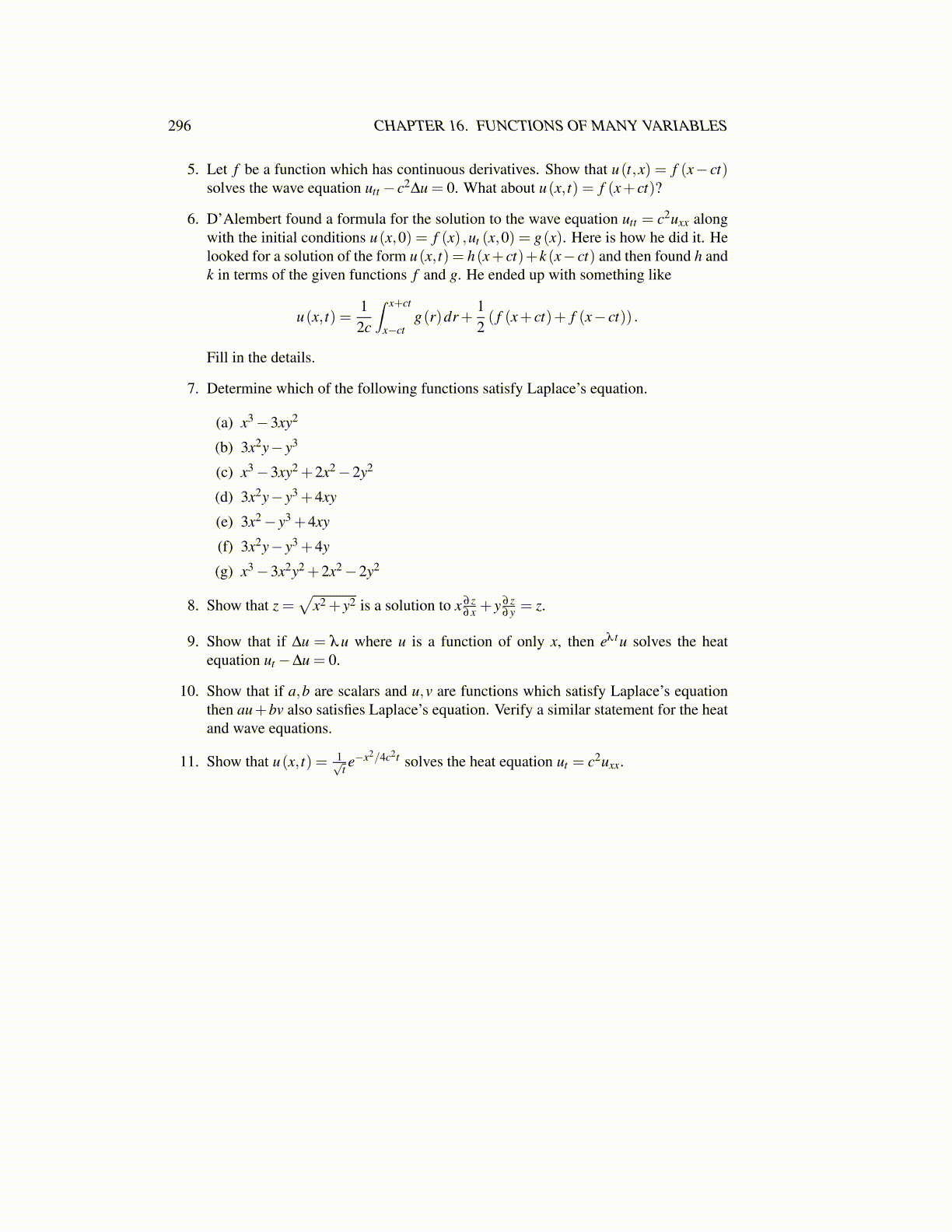
296 CHAPTER 16. FUNCTIONS OF MANY VARIABLES
5. Let f be a function which has continuous derivatives. Show that u(t,x) = f (x− ct)solves the wave equation utt − c2∆u = 0. What about u(x, t) = f (x+ ct)?
6. D’Alembert found a formula for the solution to the wave equation utt = c2uxx alongwith the initial conditions u(x,0) = f (x) ,ut (x,0) = g(x). Here is how he did it. Helooked for a solution of the form u(x, t) = h(x+ ct)+k (x− ct) and then found h andk in terms of the given functions f and g. He ended up with something like
u(x, t) =12c
∫ x+ct
x−ctg(r)dr+
12( f (x+ ct)+ f (x− ct)) .
Fill in the details.
7. Determine which of the following functions satisfy Laplace’s equation.
(a) x3−3xy2
(b) 3x2y− y3
(c) x3−3xy2 +2x2−2y2
(d) 3x2y− y3 +4xy
(e) 3x2− y3 +4xy
(f) 3x2y− y3 +4y
(g) x3−3x2y2 +2x2−2y2
8. Show that z =√
x2 + y2 is a solution to x ∂ z∂x + y ∂ z
∂y = z.
9. Show that if ∆u = λu where u is a function of only x, then eλ tu solves the heatequation ut −∆u = 0.
10. Show that if a,b are scalars and u,v are functions which satisfy Laplace’s equationthen au+bv also satisfies Laplace’s equation. Verify a similar statement for the heatand wave equations.
11. Show that u(x, t) = 1√t e−x2/4c2t solves the heat equation ut = c2uxx.